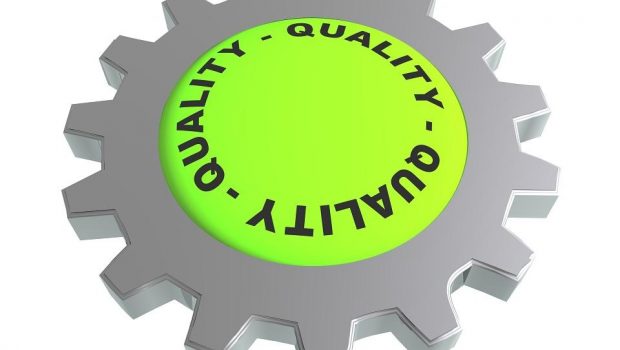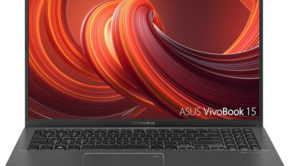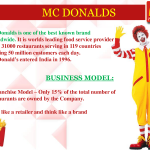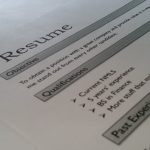12 Things That All Industrial Product Designers Should Know
Industrial product designers are required to know and understand mathematical intricacy and practical physics, and should also have a good grounding in human physiology and psychology. They must take various industry trends into consideration when designing, such as relevance of big data, aesthetic and unbreakable design concepts, business needs, engineering and product function, and product usability. All these factors contribute to an industrial product designer’s ability to design marketable products. Here are 12 things that all industrial product designers should know in order to design great products.
1. Consumer Empathy
Industrial product designers need to have a vivid imagination to get a sense of acute consumer empathy. They must have the ability to experience a product from the consumer’s perspective. Strong consumer empathy leads to several insights with regard to product usability that are otherwise not obtainable. With these insights in place, industrial product designers can work with market research analysts, engineers and production experts to design more feasible products. They can then harness their colleagues’ professional expertise and develop their designs for greater feasibility and function.
2. Computer Skills
Industrial product designers must be computer-savvy, i.e. they should be able to go beyond the basic computer skills that most engineers know. They must be well-versed with Computer-Aided Industrial Design (CAID) software, which is used to create machine-readable instructions to instruct other machines to create product designs. Industrial product designers also use CAID and 3D CAD software to create more flexible design prototypes. Industrial product designers aren’t required to know graphic designing, but this requirement depends on the needs of the company. Smaller organizations will require their product designers to function as generalists. They require their designers to demonstrate visual design competency and be able to manipulate layouts and images just as well as a graphic designer.
3. Art and Design Ability
Industrial product designers should ideally possess the ability to draw and design products, and imagine and actualize product design on paper. After all, design prototypes do begin their journey as basic sketches of the initial design ideas. Have the knowledge of Computer-Aided Design and Drafting (CADD) and 3D modeling programs is desirable, but it’s the natural artistic ability that lays the foundation. Approximately 320 postsecondary educational bodies are accredited in arts and design by the American National Association of Schools of Art and Design. These schools enable potential industrial product designers to successfully complete some basic art and design courses before entering the bachelor’s degree in product design. These designers are required to submit some examples of inherent artistic ability to make the cut.
4. Analytical Skills
Industrial designers apply logic and reasoning skills to study existing products in their target consumer market and evaluate the need for upgrades or for new products. Employers value hard-core analytical skills greatly when it comes to designing the next-generation product. This is because the process of coming up with working prototypes is expensive in terms of both, resources and costs. Businesses don’t want to be left holding a product that’s not really required or one that doesn’t fit consumers’ needs. Analytical skills play a big role in user research, comparative product research, product sketching, model making, prototyping, and testing.
5. Creativity
The ability to think creatively should be part of the industrial product designer’s skill repertoire. Designers must be able to integrate existing technologies into a new product while demonstrating an appreciable level of innovation. The market is highly competitive and uncertain, and product lifecycles are markedly short. So products should not only satisfy quality and production timelines, they should also be significantly innovative. Creativity can be learned; designers can cultivate this quality by rebuilding a Product Design Process (PDP) using creativity techniques to encourage creativity within themselves.
6. Mechanical and Structural Engineering Skills
Industrial designers must understand how the products they design are engineered into being. This helps them understand the ergonomics, sizing aspects, portability, materials, and production processes that go into the making of a product. Structural and mechanical engineering tend to use both, intuitive creativity and calculated scientific decision-making skills to arrive at the desired end result. They also take into consideration business strategies and prevailing commercial, aesthetic and social attitudes in the market. The end result needs to conform to function, usability, form, physical ergonomics, marketing norms, brand development, product sustainability, and sales metrics.
7. Problem-solving Skills
Industrial designers are required to identify complex design problems and implement solutions to resolve them. Problems such as the need for a particular product, the size required, affordable costing, possible production issues, and so on should be anticipated by them. If a product design does not meet the analyzed market requirement, it is up to the designer to evaluate various options, and develop and propose alternatives. However, not all proposed alternatives will be accepted by the management. Many will come back to the board for redesigning and several problems will be added to the existing list. Only painstaking scientific problem-solving techniques will help industrial product designers stick to the process until success.
8. Understanding of Human Psychology
Through centuries, craftsmen designed various everyday products that became industrialized later on. Industrial designers have been right from the start – it is necessary to understand what people want and why they want that. This realization is now causing large manufacturing companies to allot significant portions of their budgets towards the aesthetic betterment of products. Having a good design makes better sense than having an ugly design. People are more design-conscious now than ever before and will no longer settle for products that are rich in functions, but are aesthetically unattractive. Product designers, therefore, need to undergo an in-depth study of purchasing behavior and its impact on industry trends and evolve their design techniques accordingly.
9. Strong Communication and Product Marketing Skills
Product designers have to also undertake the task of convincing others that their design path is the right one for the company. This means that the product designer should know exactly what he or she is talking about, in order to communicate ideas suited to different audiences. Consider the number of people to be convinced with regard to the aesthetics, costs, materials, product functionality, and market cost statistics. The product team, the management, the developers and the finance team will be in the need-to-know bracket. It is necessary for the designer to know all these departmental worlds in order to speak their tongue and develop cooperative working relationships.
10. Listening Skills
Customers will request for endless function and feature upgrades. Management will veto any number of proposals and go ahead with only what they want. Numerous problems will occur in the product-execution phase despite any number of tests, never mind how good the product designer is. The only way forward is to listen to everyone, and learn when to say no, when to put one’s foot down, and when to take feedback and evolve. It is not easy to eat humble pie, but this is a required part of evolving as a superior product designer.
11. Curiosity
Industrial product designers can obtain inspiration from just about anything. A great design thinking idea lies waiting in every exhibition hall, movie, TV show, and discussion with competing designers, and so on. So it’s best never to turn off one’s curiosity, but to hone it to perfection. It works to maintain a strong interest in visual arts such as movies and photography, and in virtual and physical designs of all sorts. One should keep informed on the latest happenings, upcoming products, new colors, new materials, and more in that vein. Stay informed by reading relevant magazines, blogs and publications in the field of engineering and design.
12. Innovation Continues
A brilliant design engineer can make a huge impact on the prevailing culture through his or her designs. History is proof of this; take the renowned architect Alvar Aalto, for example. He innovated a number of household items such as lamps, chairs, stools, vases and tea-carts. Raymond Loewy, a prolific American designer is credited with designing the PRR S1 steam locomotive, the Studebaker Starlight, Electrolux refrigerators, short-wave radios, French ovens, and several furniture designs. There are as many names as there are designs.
Each of these designs began as a concept in the mind of the product designer, and was executed via partnership with multiple players in the process, until they were released into the market. The important aspect here is that even after a product is released, innovation continues.
Conclusion
Manufacturers don’t rest on their laurels; they continue to get their designers to build successful product designs, and putting upgrades and associated accessories out in the market regularly. An industrial product designer’s job is never truly done, as long as the market demands more functional and aesthetic products.
















